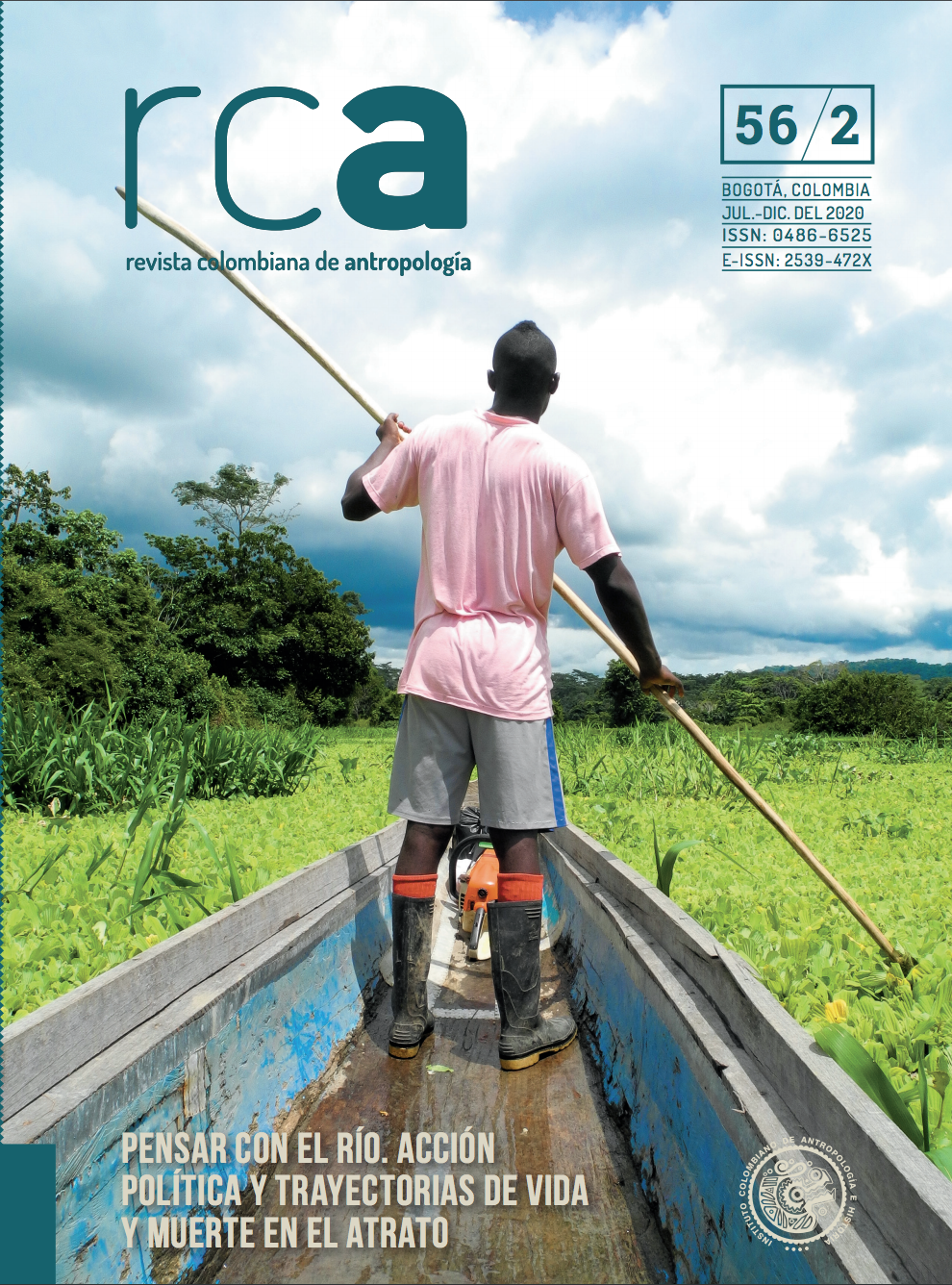The Ecumene of the Living and the Dead Bad Death and Territorial Reparations in Bajo Atrato
DOI:
https://doi.org/10.22380/2539472X.639Keywords:
damage, territory, reconciliation, human and nonhuman relationshipsAbstract
In the forests of the Bajo Atrato region, battles between guerrilla and paramilitary armies left a multitude of unburied corpses whose spirits have transformed the way in which local communities inhabit and heal their collective lands. It is argued that these spirits, along other set of experiences of suffering and pain that extend beyond the human, are a form of territorial damage. Ethnographic attention to this kind of damage is key in order to design adequate local and regional policies of peace and reconciliation.
Downloads
References
Berque, Augustin. 1987. Écoumène. Introduction à l’étude des milieux humaines. París: Belin.
Casey, Edward. 1996. “How to Get from Space to Place in a Fairly Short Stretch of Time”. En Senses of Place, editado por Steven Feld y Keith H. Basso, 13-52. Santa Fe: School of American Research Press.
CIJP (Comisión Intereclesial de Justicia y Paz). 2005. La Tramoya: derechos humanos y palma aceitera, Curvaradó y Jiguamiandó. Bogotá: Cinep y CIJP.
Das, Veena. 1997. “Language and Body: Transactions in the Construction of Pain”. En Social Suffering, editado por Veena Das, Arthur Kleinman y Margaret Lock, 67-91. Berkeley: University of California Press.
—. 1998. “Wittgenstein and Anthropology”. Annual Review of Anthropology 27: 171-195. DOI: https://doi.org/10.1146/annurev.anthro.27.1.171
Eliade, Mircea. 1971. The Myth of the Eternal Return: Cosmos and History. Princeton: Princeton University Press.
Escobar, Arturo. 2008. Territories of Difference. Place, Movements, Life, Redes. Durham; Londres: Duke University Press. DOI: https://doi.org/10.1215/9780822389439
Friedemann, Nina S. de. 1974. “Minería del oro y descendencia: Güelmambí, Nariño”. Revista Colombiana de Antropología 16: 9-52.
Hastrup, Kristen. 2010. “Emotional Topographies: The Sense of Place in the Far North”. En Emotions in the Field: The Psychology and Anthropology of Fieldwork Experience, editado por James Davies y Dimitrina Spencer, 191-211. Stanford: Stanford University Press.
Hertz, Robert. (1909) 1960. A Contribution to the Study of the Collective Representation of Death. Glencoe: The Free Press.
Jimeno, Myriam. 2004. Crimen pasional. Contribución a una antropología de las emociones. Bogotá: Universidad Nacional de Colombia.
—. 2007. “Lenguaje, subjetividad y experiencias de violencia”. Antípoda 5: 169-190.
Kwon, Heonik. 2008. Ghosts of War in Vietnam. Cambridge: Cambridge University Press. DOI: https://doi.org/10.1017/CBO9780511807596
Lara, Alí y Giazú Enciso Domínguez. 2013. “El giro afectivo”. Athenea Digital 13 (3): 101-119. DOI: https://doi.org/10.5565/rev/athenead/v13n3.1060
Losonczy, Anne-Marie. 2006. La trama interétnica. Ritual, sociedad y figuras de intercambio entre los grupos negros y emberá del Chocó. Bogotá: Instituto Colombiano de Antropología e Historia; Instituto Francés de Estudios Andinos. DOI: https://doi.org/10.4000/books.ifea.4695
Lutz, Catherine y Geoffrey White. 1986. “The Anthropology of Emotions”. Annual Review of Anthropology 15: 405-436. DOI: https://doi.org/10.1146/annurev.an.15.100186.002201
Massumi, Brian. 2002. Parables for the Virtual: Movement, Affect, Sensation. Durham: Duke University Press. DOI: https://doi.org/10.1215/9780822383574
Merleau-Ponty, Maurice. (1945) 2002. Phenomenology of Perception. Londres; Nueva York: Routledge. DOI: https://doi.org/10.4324/9780203994610
Navaro-Yashin, Yael. 2009. “Affective Spaces, Melancholic Objects: Ruination and the Production of Anthropological Knowledge”. Journal of the Royal Anthropological Institute 15: 1-18.
—. 2012. The Make-Believe Space: Affective Geography in a Postwar Polity. Durham: Duke University Press.
Nieto, Patricia. 2012. Los escogidos. Medellín: Alcaldía de Medellín; Sílaba Editores.
Nixon, Rob. 2011. Slow Violence and the Environmentalism of the Poor. Cambridge: Harvard University Press. DOI: https://doi.org/10.4159/harvard.9780674061194
Observatorio del Programa Presidencial de Derechos Humanos. 2003. Panorama actual del Chocó. Bogotá: Presidencia de la República, Ministerio del Interior.
Oslender, Ulrich. 2004. “Fleshing Out the Geographies of Social Movements: Colombia’s Pacific Coast Black Communities and the ‘Aquatic Space’”. Political Geography 23: 957-985. DOI: https://doi.org/10.1016/j.polgeo.2004.05.025
—. 2008. Comunidades negras y espacio en el Pacífico colombiano. Hacia un giro geográfico en el estudio de los movimientos sociales. Bogotá: Instituto Colombiano de Antropología e Historia; Universidad Colegio Mayor de Cundinamarca; Universidad del Cauca.
Pelkmans, Mathijs. 2013. “The Affect Effect”. Anthropology of this Century 7. http://aotcpress.com/articles/affect-effect/
Perera, Sasanka. 2001. “Spirit Possessions and Avenging Ghosts. Stories of Supernatural Activity as Narratives of Terror and Mechanisms of Coping and Remembering”. En Remaking a World. Violence, Suffering and Recovery, editado por Arthur Kleinman, Veena Das, Margaret Lock, Mamphela Ramphela y Pamela Reynolds, 157-200. Berkeley: University of California Press. DOI: https://doi.org/10.1525/california/9780520223295.003.0005
Quiceno, Natalia. 2015. “Vivir sabroso: poéticas de la lucha y el movimiento afroatrateño en Bojayá, Chocó (Colombia)”. Tesis doctoral, Departamento de Antropología Social, Museo Nacional, Universidad Federal do Rio de Janeiro, Río de Janeiro. DOI: https://doi.org/10.12804/th9789587387506
Seigworth, Gregory y Melissa Gregg. 2010. “An Inventory of Shimmers”. En The Affect Theory Reader, editado por Melissa Greg y Gregory Seigworth, 1-25. Durham; Londres: Duke University Press. DOI: https://doi.org/10.1215/9780822393047
Serrano, José. 1994. “Cuando canta el guaco: la muerte y el morir en poblaciones afrocolombianas del río Baudó, Chocó”. Tesis de grado, Departamento de Antropología, Universidad Nacional de Colombia, Bogotá.
Seyfert, Robert. 2012. “Beyond Personal Feelings and Collective Emotions: Toward a Theory of Social Affect”. Theory, Culture & Society 29 (6): 27-46. DOI: https://doi.org/10.1177/0263276412438591
Spinoza, Benedictus de. (1677) 2001. Ethics. Traducido por W. H. White y A. H. Stirling. Londres: Wordsworth.
Stewart, Kathleen. 2007. Ordinary Affects. Durham; Londres: Duke University Press. DOI: https://doi.org/10.1215/9780822390404
Taussig, Michael. 1992. The Nervous System. Nueva York; Londres: Routledge.
Thrift, Nigel. 2008. Non-Representational Theory: Space, Politics, Affect. Nueva York: Routledge. DOI: https://doi.org/10.4324/9780203946565
Trujillo Molano, Jimena. 2012. “Escribir sobre lo intangible. Vivir lo sagrado”. En Etnografías contemporáneas. Trabajo de campo, editado por Sandra Murillo, Myriam Jimeno y Marco Martínez, 181-208. Bogotá: Universidad Nacional de Colombia.
Valencia, Armando. 2013. “Alternativas organizativas ante la guerra y el desplazamiento en el bajo Atrato”. Revista de Estudios del Pacífico Colombiano 1: 57-81.
Velásquez, Rogerio. (1961) 2000. “Ritos de la muerte en el Alto y Bajo Chocó”. En Fragmentos de historia, etnografía y narraciones del Pacífico colombiano negro. Bogotá: Instituto Colombiano de Antropología e Historia.
Whitten, Norman. 1974. Black Frontiersmen. A South American Case. Nueva York: Schenkman Publising Company.
Filmografía
Del Toro, Guillermo, dir. 2001. El espinazo del diablo. México; España: Canal+ España; Good Machine; Sogepaq; Sony Pictures Classics.
Echavarría, Juan Manuel. 2013. Requiem NN. 2013. Colombia: Lulo Films.




















